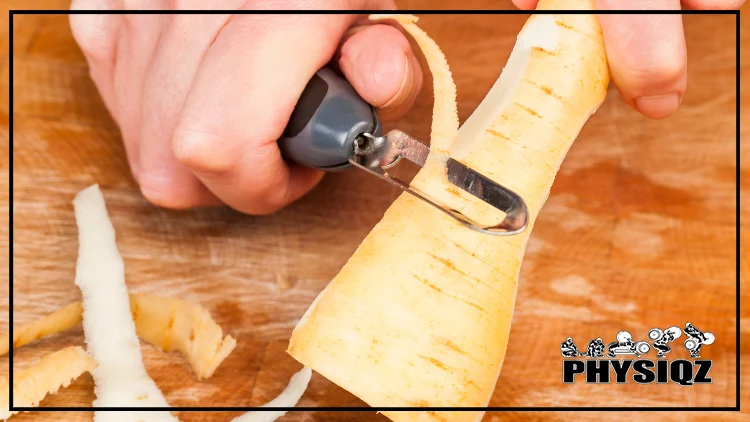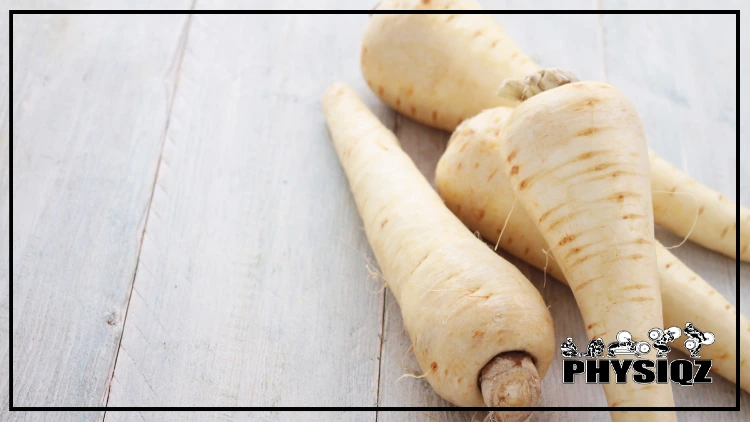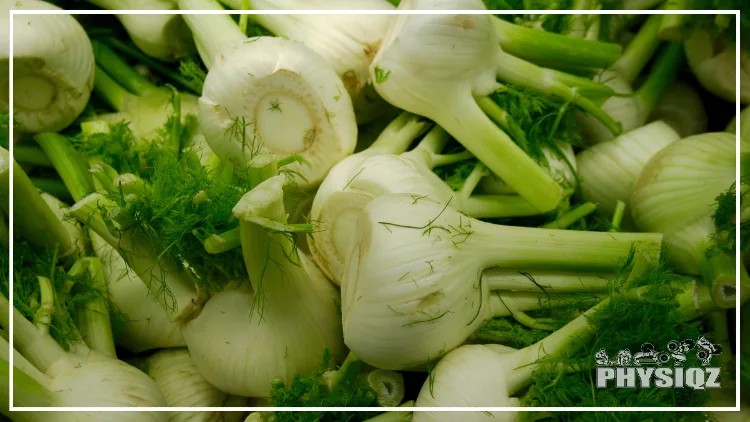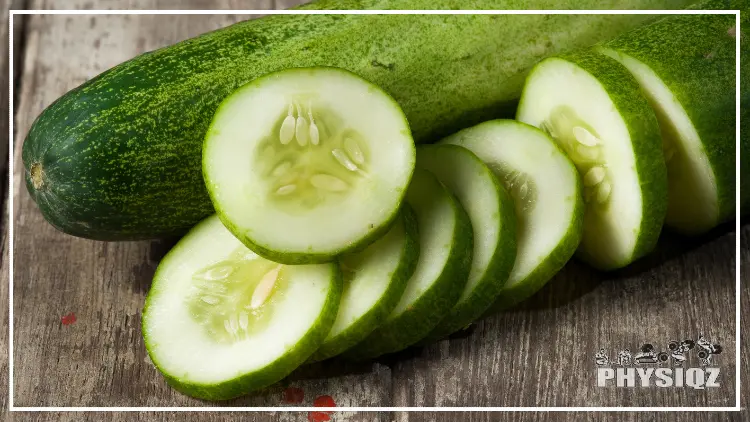
Parsnips are delicious and have a natural earthy flavor—those on a low carb diet might be tempted to include them in their meal plan but may hesitate to consider the carb content in parsnips, just as they do with any other food.1
The unfortunate truth is that this root vegetable that resembles carrots could is not keto but a closer look at their carb contents and 7 keto friendly root vegetables will leave you with an idea on how much parsnip you can eat, and substitutes too.
Are Parsnips Keto-Friendly? Understanding Parsnips in a Keto Diet & Lifestyle
Parsnips are a starchy root vegetable that are not keto and certainly not approved to be on a keto diet. This is because they have a high carb content and have very low levels of fat—two macro traits that are not desirable when someone is looking for foods to include in a keto diet.
A ketogenic diet which is among the nation’s hottest trending diets requires those who are partaking in to ingest low amounts of carbs, high amounts of fat and moderate quantities of protein.2

Source: Langan via Canva.com3
The carb content of these vegetables is nearly half of keto diets daily allotment. Point being, someone on a keto diet must consume between 20 and 50 grams of net carbs on a daily basis to remain in a state of ketosis (based on a 2000 kcal diet)—where the body breaks down the fat into ketones to be used as an energy source instead of glucose in what is termed as ketosis.4
With their high carb content, including parsnips in a keto diet is not a good idea because they can easily disrupt ketosis, defeating the purpose of the diet.
Although parsnips are not typically considered keto-friendly, dieters can enjoy 1/3 to 1/2 a cup if they are careful and limit their portion size.
How Many Carbs Are in Parsnip: Keto or Not?
Parsnips are a starchy root and as a consequence, have a high amount of carbs present; as per the United States Department of Agriculture, a raw serving of 133 grams has a colossal 23.9 grams of total carbs.5 This easily exceeds the minimum amount of carbohydrates that can be consumed by those on a keto diet which rules out parsnips as a keto friendly vegetable.
To consume parsnip keto style, someone will need to eat the vegetable throughout the day and not in one sitting. They will need to ensure that it remains as the only source of carbs on the day; in this way, parsnips can be enjoyed by those on a keto diet.
Alternative Root Vegetables That Are Low in Carbs
Now that it has been established that parsnips may not ideally be keto, there are 7 keto friendly vegetables to substitute for parsnips that are also root vegetables and are low in carbs. These include radishes, onions and rutabaga.
1. Beetroot
Beetroots are a low carb root vegetable that are bright in color and sweet containing a sizable amount of nitrates; this quality is ideal because it gives the body the ability to retain oxygen which is a useful quality for athletes. They are very flexible culinary wise—they can be eaten raw, cooked or even pickled and have an earthy flavor. Beetroots can be enjoyed in soups or even used to make healthy beet juice which can lower blood pressure. They contain a lowly 9.56 grams of carbs in a 100 gram serving.
2. Turnips
Turnips are a very nutritious root that are loaded with vitamin C and electrolytes which have excellent health benefits. Just like carrots, they are crunchy and sweet with an unpleasant and bitter taste when raw but when cooked, they are sweet minus the earthy taste.
They can be consumed raw as a component of salads and slaws; when boiled and steamed, turnips can be added to mash potatoes. Turnips are keto-friendly as they are low in carbs, with a serving of 100 grams containing only 6 grams of carbohydrates.
3. Onions
Onions are easily one the most popular vegetables on the planet with nearly all cultures worldwide incorporating them into their meals. Whether used as ingredients for stew along with meat, or making salsas, curries and sauces, these vegetables are loaded with nutrients such as antioxidants and vitamin C. People curious about vitamins that can aid in weight loss will be surprised to learn that vitamin C is one of them.
Onions are uniquely indispensable in the culinary world and keto enthusiasts would be pleased to know that this vegetable packs 9 grams of carbs in a 100 gram serving.
4. Substitute to Parsnip: Keto Radishes
These root vegetables are spicy and pungent and belong to the Brassicaceae family of plants. However, when cooked they turn into a mild flavor similar to a turnip. They can be roasted making a savory side dish combined with chicken and beef. Radishes are extremely low in carbs with a 100 gram serving yielding a measly 3.4 grams of carbs.
5. Fennel
Fennels are delicious root vegetables that have a mild flavor with hints of licorice. They are not ideally eaten raw but can be cooked as carrots are, adding them to soup to help create a thicker broth. During cooking, especially when sautéed with onions, they develop a sweet flavor with notes of citrus—they are crunchy when raw and become soft when cooked.

Source: bepslabor via Canva.com6
Fennels make for an excellent side dish when roasted and can be used to enhance flavors in curries and stews. They are low in calories and carbs with a carb content of 7 grams of carbs in a serving of 100 grams and are a great substitute to parsnip, keto approved too.
6. Rutabaga
The rutabaga is a combo of a cabbage and turnip and may sometimes be referred to as a Swedish turnip and is a cruciferous vegetable. This root vegetable contains glucosinolates that have shown to have anti-cancer properties, although sometimes too much of these chemicals can cause damage to the cells of the body in the same way that chemotherapy does.7 They are less sweet than carrots with a mildly bitter flavor.
Rutabagas can be consumed raw or cooked and pureed into soup; they can also be roasted along with other vegetables. They contain a fair amount of fiber and are low in carbs with a 100 gram serving boasting 9 grams of carbs.
7. Celeriac
Also known as celery root, these root vegetables when raw are crunchy with a nutty flavor to them which makes them the perfect addition to salads and slaws. When cooked, celery roots turn slightly sweet. They can be baked, boiled, roasted and mashed making them an ideal side dish for those on keto.
Celery may help protect against cancer as they contain apigenin which facilitates apoptosis which is the death of cancer cells.8 They have an extremely low carbohydrate content at 2.97 grams of carbs for a 100 gram portion and also have miniscule calorie count making them an ideal option for those in pursuit of a 1000 calorie deficit.
Keto Vegetables: Keto Friendly Vegetables (Low-Carb Non-Root Vegetables)
For those not too keen on starchy root vegetables, there are other keto vegetables that can be added to the diet with excellent health benefits whilst having low carbs. They include tomatoes, spinach and asparagus.
Spinach
Spinach is a popular green leafy vegetable with a high content of iron, antioxidants and calcium. It can be consumed in salads having a mildly sweet taste with an herby flavor but takes more acidic tangy tones when cooked.
It is best consumed raw to preserve nutrients and its versatility makes it possible to blend in smoothies and juices. Spinach can be used in soups, curries, pastries and frittatas. Spinach has an extremely low carb count, with only 3.6 grams of carbs per 100-gram serving. Including spinach in your diet can be one of the effective strategies to help you lose 10-15 pounds in a month.
Tomato
There are different types of tomatoes including cherry tomatoes and Italian tomatoes and all have different carbohydrate content—however, all remain low making this popular and indispensable vegetable in the culinary world perfect for those on keto.
They are a sour, sweet and savory vegetable that are perfect for salads or slaws when raw; they can be cooked to make stews, soups and curries. Tomatoes are added to pizzas, sauces or cheeseburgers—put it simply, they can be combined with any food. The average tomato yields 3.9 grams of carbs for a 100 gram serving.
Asparagus
Asparagus are a flowering plant with over 300 species with the best known one being the edible type. This green vegetable has an earthy grass like flavor with a hint of sweet bitter taste and can be eaten raw or cooked but often, the latter is preferred. It is low in energy and rich in antioxidants.
Asparagus can be used in salads, pastas, frittatas, omelets and stir-fries and are widely available and cheap. They have a very low carb content at 3.9 grams of carbs for a 100 gram serving.
Lettuce
Lettuce is a popular ingredient in salads and comes in a variety, with some being soft, others being crispy while others being firm. They are used on sandwiches, burgers or as components of vegetable dishes that are cooked or even when cooking stews. Lettuce have an extremely low carb count at 2.9 grams of carbs for a 100 gram portion.
Broccoli
Broccoli are part of the cabbage family, whose green leaves are consumed. They are very nutritious vegetables loaded with vitamins, antioxidants, fiber and minerals. Eating on a calorie deficit is possible with various foods, but choosing broccoli can not only aid in weight loss through proper nutrition but also provide excellent health benefits.
Broccoli are crunchy and have a mildly bitter-sweet taste to them but become sweeter when cooked. They can be used to make salads, or as a side dish with fish and chicken and can also be made into soup. Their carb content is slightly higher compared to other vegetables at 7 grams of carbs for a 100 gram serving; they still do remain keto friendly.
Cucumber
Cucumbers are a green creeping vine plant that are very popular worldwide that are low in calories and are very nutritious. They contain minerals, vitamins including vitamin A and K. Cucumbers have a refreshing taste that is mild which is due to the high amount of water they contain. They are crisp and refreshing when raw, providing a cooling effect justifying the saying “cool as a cucumber”.

Source: showcake via Canva.com9
Cucumbers are great for sandwiches, burgers, bagels and salads when raw. They can also be cooked and added to stir fries. As expected, they have a low carb count at 3.63 grams of carbs for every 100 grams.
Mushrooms
Mushrooms are a versatile vegetable that find their way into pizzas, salads, quesadilla and stir fires—they are a fleshy fungus consisting of many varieties. Mushrooms have an earthy and meaty flavor and contain umami which is the 5th primary taste described as being savory and brothy as it loiters in the mouth. Mushrooms have 3.3 grams of carbs for every 100 grams, making them a much better option than parsnip, keto friendlier too.
Zucchini
Zucchini are a type of vegetable that resembles cucumbers but they actually do not belong to the same family. They have a slight bitter-sweet flavor but the sweetness becomes more pronounced when they are cooked. Zucchini are the perfect substitute for pasta (zoodles) due to their low carbs and they adapt the flavor of whatever they are cooked with. They can be used for salads or even treats such as carrot cake and banana bread. Zucchinis are low in carbohydrates at 3.1 grams of carbs per 100 grams.
Parsnip Keto Recipe Ideas
Parsnips can either be roasted, boiled or sautéed and there are numerous recipes that allow this vegetable to be incorporated into a keto diet. Caution should always be taken to limit the vegetable as the sole source of carbs for the day and spread over more than one meal.
Creamy Parsnip with Apple Soup
This meal is prepared by cooking one chopped onion in olive oil until soft. One pound of cut parsnips and 2 peeled apples are cut and chicken broth is added. The mixture is simmered until the parsnips are soft and pureed until smooth, adjusting water and broth until it is consistent.
Sautéed Parsnips & Rosemary
Parsnips should be sliced and cooked in butter with a little water and a rosemary sprig in a skillet until soft and tender. The parsnips are then topped with honey, salt and pepper.
Roasted Parsnips (Spicy) with Carrots
Parsnips and carrot sticks are stirred with olive oil, cumin, salt, pepper and ground coriander. Roast the whole mixture at 400 F turning once until they are brown and soft.
Parmesan & Parsnip-Potato Mash
This is a combo of both these vegetables, they are prepared by peeling both and boiling until they are both soft. Drain the water and add milk, butter and grated parmesan. Mash the mixture up and season with pepper and salt. Keto enthusiasts wondering if mashed potatoes good are for weight loss may be surprised that they can be, depending on their preparation.
Those wondering about the keto-friendliness of parsnips will find that they are generally not suitable for a keto diet due to their higher carb content. Consuming them in moderation may allow for their inclusion in a low-carb diet, but just barely. The good news is that there are seven keto-friendly vegetables available as substitutes for parsnips. These alternatives offer a much lower carb content while still being healthy and, most importantly, delicious.
Frequently Asked Questions
Are Roasted Parsnips Keto Friendly?
Roasted parsnips are typically not keto friendly as a result of the high amount of carbs that they contain. However, if they are consumed in moderation and as the only source of carbs over the day spread over more than one meal, they can be consumed on a keto diet.
Can Parsnip Fries Fit into a Keto Diet?
Parsnip fries can be keto if consumed within reason. A serving of 100 grams contains just over 20 grams of carbohydrates—if the fries are eaten sparingly and as the only source of the carbs, then they can be keto.
References
1lucentius. Canva. Accessed 13 April 2023. <https://www.canva.com/photos/MAED8rJHAFg-parsnip-peeling/>
2Direct, H. (2021, May). Ketogenic diet. Retrieved 2022, from <https://www.healthdirect.gov.au/ketogenic-diet>
3Langan. Canva. Accessed 13 April 2023. <https://www.canva.com/photos/MABhaRYPFck-parsnips/>
4Annamaraju, P., & Uppaluri, K. R. (2022, June 11). Ketogenic Diet. Retrieved 2022, from <https://www.ncbi.nlm.nih.gov/books/NBK499830/>
5Agriculuture, U. D. (2019). Parsnips, raw. Retrieved 2022, from <https://fdc.nal.usda.gov/fdc-app.html#/food-details/170417/nutrients>
6bepslabor. Canva. Accessed 13 April 2023. <https://www.canva.com/photos/MABVAycC3Es-fennel/>
7Prabhakaran Soundararajan, J. S. (2018, November 15). Anti-Carcinogenic Glucosinolates in Cruciferous Vegetables and Their Antagonistic Effects on Prevention of Cancers. Retrieved 2022, from <https://www.ncbi.nlm.nih.gov/pmc/articles/PMC6278308/>
8Bokyung Sung, H. Y. (2016, December 30). Role of Apigenin in Cancer Prevention via the Induction of Apoptosis and Autophagy. Retrieved 2022, from <https://www.ncbi.nlm.nih.gov/pmc/articles/PMC5207605/>
9showcake. Canva. Accessed 12 April 2023. <https://www.canva.com/photos/MADarTVxtC8-cucumber-slices-on-wooden-background/>